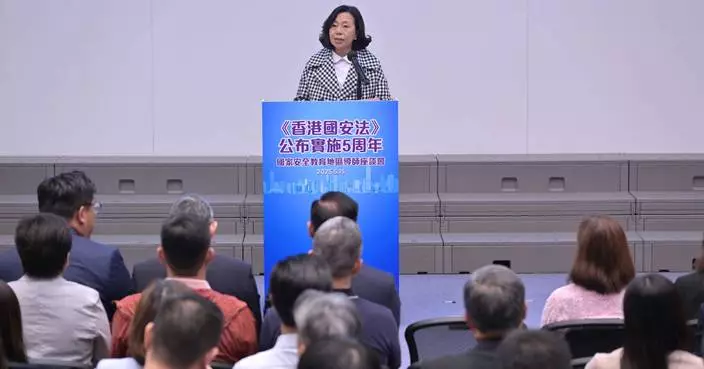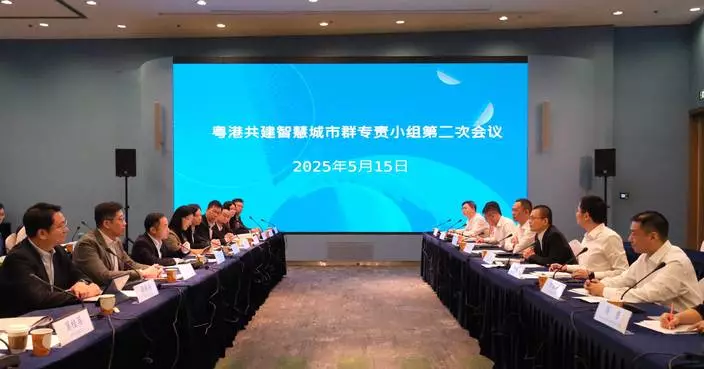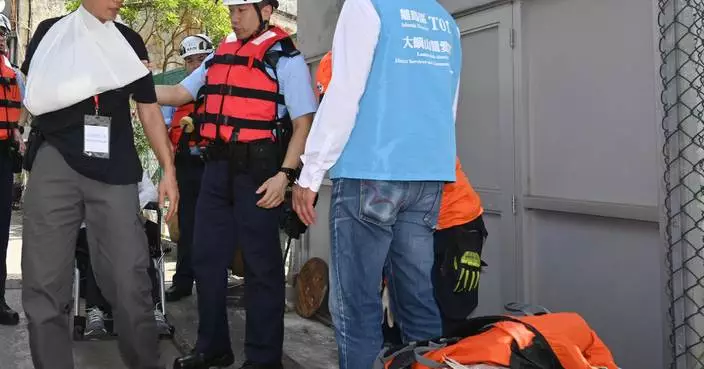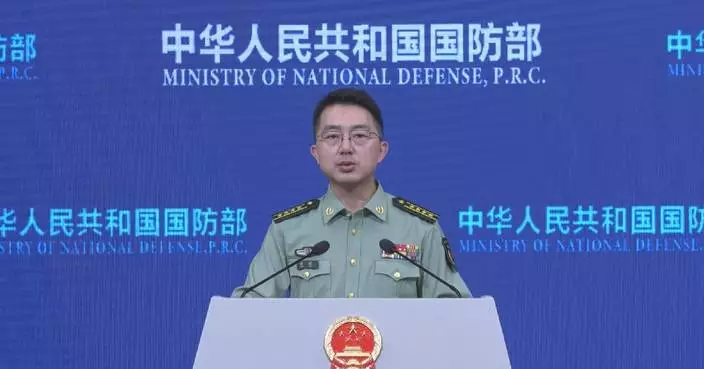SFST's speech at Insurtech Insights Asia Conference 2024
Following is the speech by the Secretary for Financial Services and the Treasury, Mr Christopher Hui, at the Insurtech Insights Asia Conference 2024 today (December 4):
Kris (CEO of Insurtech Insights, Mr Kristoffer Lundberg), distinguished guests, ladies and gentlemen,
It is an honour to join you at the Insurtech Insights Asia Conference 2024. Let me begin by thanking Insurtech Insights for organising this important event, which gathers a distinguished group of local and international delegates, including some of the most influential leaders in the insurance industry. This conference is a vital platform for fostering collaboration, building connections, and generating new opportunities in the dynamic and evolving world of insurance.
Today, we stand at a critical juncture for the global insurance industry. As risks become more complex and unpredictable, the industry must adapt and innovate to address challenges and seize opportunities. Hong Kong, with its vibrant insurance ecosystem and strategic position as a leading global financial centre, is well positioned to play a pivotal role in shaping the future of insurance.
I will highlight three key roles that define Hong Kong's approach to strengthening our position as an international risk management hub: Connector, Catalyst, and Creator. These three Cs pillars will guide our efforts to navigate current challenges and unlock future opportunities.
The changing insurance landscape
The global insurance industry is undergoing profound transformation. Risks are becoming increasingly intricate, driven by geopolitical tensions, climate change, and emerging cyber threats. These factors are reshaping the way insurers assess and manage risk.
Despite these challenges, the insurance market has shown remarkable resilience. Robust demand has propelled the industry to a new equilibrium, with global life premiums projected to grow by 2.9 per cent in real terms and non-life premiums by 3.3 per cent in 2024, according to market research. This growth underscores the sector's resilience and its vital contribution to economic stability and development.
Hong Kong plays a unique role in this global landscape. Last year, the city's total gross premiums increased by 0.8 per cent, reaching more than HK$540 billion, while 157 authorised insurers operated in the region as of end-June this year. These figures reflect our strength as a leading insurance market and its potential to drive global industry transformation.
To build on this very sound foundation, we are focusing on the three "C"s - Connector, Catalyst, and Creator - to further solidify Hong Kong's position as a global risk management hub.
Connector: enhancing regional collaboration
First of all, as a Connector, to enhance regional collaboration. This is about Hong Kong's role as a Connector, facilitating collaboration between local and international businesses and serving as a gateway for Mainland enterprises to expand globally.
Hong Kong's strategic position as the nexus of domestic-international dual circulation makes it an ideal platform for facilitating cross-border opportunities. The National 14th Five-Year Plan explicitly supports Hong Kong's development as both an international financial centre and a global risk management hub. This reinforces our role as a "super-connector", enabling seamless integration between the Mainland and international markets.
Recent initiatives announced in the Chief Executive's 2024 Policy Address reflect this commitment. For example, we are working to enhance mutual access to insurance markets within the Guangdong-Hong Kong-Macao Greater Bay Area (GBA). Specific measures include reviewing the risk-based capital (RBC) regime introduced earlier this year and examining capital requirements for infrastructure investments. Furthermore, we continue to invite Mainland and overseas enterprises to establish captive insurers in Hong Kong and commence the legislative preparatory work for establishing a policy holders' protection scheme in Hong Kong. These initiatives aim to diversify risk portfolios, encourage infrastructure investment, and strengthen the resilience of the insurance sector.
The GBA, with its more than 86 million residents and combined GDP (Gross Domestic Product) of approximately US$14 trillion, presents unparalleled opportunities for growth. By facilitating the free flow of people, goods, and capital across these 11 GBA cities, we are creating a seamless environment for the industry, in particular the insurance industry, to thrive.
To support Hong Kong policyholders living or working in the GBA, we are striving to establish after-sales service centres in key locations such as Nansha and Qianhai. These centres will provide essential services, including policy inquiries, premium renewals, and claims support, further promoting the integration of insurance markets between Hong Kong and the Mainland.
Additionally, we have implemented the unilateral recognition policy for cross-boundary motor insurance, which aligns with the commencement of Northbound Travel for Hong Kong vehicles on July 1, 2023. This policy provides a more convenient way for drivers to secure the necessary insurance coverage for operating relevant vehicles to drive on the Mainland. Currently, an amount of 22 local insurers, representing approximately 90 per cent of the relevant market segment, are offering such products.
Also, we are encouraging the development of cross-boundary insurance products, such as health insurance policies tailored to the needs of individuals and businesses operating across the GBA. These efforts aim to strengthen connectivity and support the seamless movement of people and goods within the region.
Catalyst: driving change and addressing emerging challenges
Now comes to the second "C", which is about Catalyst, to drive change and addressing emerging challenges. It is about Hong Kong's role as a Catalyst for innovation and adaptation in the face of emerging global challenges.
The insurance industry is confronting unprecedented risks, particularly from natural catastrophes. Last year, market study found that global insured losses from natural disasters exceeded US$100 billion for the fourth consecutive year, an alarming trend that underscores the urgency of building resilience. With insured losses totalling US$60 billion in the first half of this year - 62 per cent above the 10-year average - we must recognise that the challenges we face require us to think differently about risk and resilience.
In response, the Government published the "Development Roadmap for the Insurance Sector in Hong Kong" in December 2022. This strategic document outlines our vision for consolidating our position as a global risk management hub while addressing the evolving needs of the sector.
We had taken a series of key measures a few years ago to strengthen our role as an international risk management hub. We have implemented legislative amendments to offer half-rate profits tax concession for marine and specialty lines of insurance business, expand the scope of risks insurable by captive insurers formed in Hong Kong, and enhance the legal framework for group-wide supervision, with three international insurance groups designated in Hong Kong thereunder.
We have rolled out a regulatory regime for special purpose insurers and a pilot grant scheme for insurance-linked securities (ILS), underscoring our commitment to innovation in the sector. We have seen so far five ILS issuances in Hong Kong, all in the form of catastrophe bond and with a total insurance amount of more than US$700 million, securing protection against losses inflicted by tropical cyclones and earthquakes on the Mainland and overseas places. Two ILS sponsored by the World Bank have been listed on the Hong Kong Stock Exchange.
Creator: innovating through insurtech
Finally, the "C" is about Creator, concerning innovation. The third pillar is about our role as a Creator of innovative insurtech solutions, which very much echo the theme of today's conference. The challenges posed by climate change, demographic shifts, and evolving customer expectations demand continuous innovation. Technology plays a central role in addressing these challenges, narrowing protection gaps, and promoting financial inclusion.
Global insurtech investment is projected to reach more than US$4 billion by the end of this year, reflecting the sector's transformative potential. Technologies such as AI (artificial intelligence) are revolutionising risk management, enhancing customer experiences, and streamlining operations.
Hong Kong is at the forefront of this transformation. The Insurance Authority (IA) has launched several initiatives to foster innovation, including the Fast Track and Insurtech Sandbox. These platforms encourage collaboration between traditional insurers and insurtech start-ups, enabling them to test new ideas and bring innovative products to market efficiently.
To date, four virtual insurers operating exclusively through digital distribution networks and channels have been authorised under the Fast Track. Meanwhile, the Insurtech Sandbox provides a controlled environment to test out innovative solutions, reduce development costs, and expedite the launch of new products.
The introduction of the Open API (Application Programming Interfaces) Framework last year has further enhanced data exchange and transparency in the insurance market. By providing industry players with guidance on deploying API technology, this framework fosters partnerships between insurers and tech ventures, ultimately improving services for policyholders.
Our insurtech ecosystem is also playing a key role in supporting the Belt and Road Initiative (BRI). Multinational insurers and reinsurers based in Hong Kong are leveraging advanced technologies to provide professional services for BRI-related infrastructure and investment projects. Through supportive measures and also policies and more importantly active engagement by the IA, we aim to attract more Mainland enterprises to establish captive insurers in Hong Kong, enhancing their risk management capabilities.
All these efforts reflect our very commitment to positioning Hong Kong as a global leader in insurtech innovation, driving positive disruption and creating value for the industry and our customers.
Closing remarks
Ladies and gentlemen, the future of the insurance industry is filled with both challenges and opportunities. By embracing change, fostering innovation, and strengthening collaboration, Hong Kong is well positioned to lead as a global risk management hub.
I invite all of you - leaders and innovators from Hong Kong and afar in risk management - to join us in shaping the future of this vital industry. Together, we can drive innovation, enhance resilience, and create a more inclusive and sustainable insurance ecosystem.
Before I close and before I wish you all a great conference, for those who are new to Hong Kong, apart from attending the conference, I hope you can enjoy the natural landscape with more than 40 beaches and hiking trails of more than 500 kilometres in Hong Kong, which are actually a few minutes away from here. Thank you.

SFST's speech at Insurtech Insights Asia Conference 2024 Source: HKSAR Government Press Releases















































